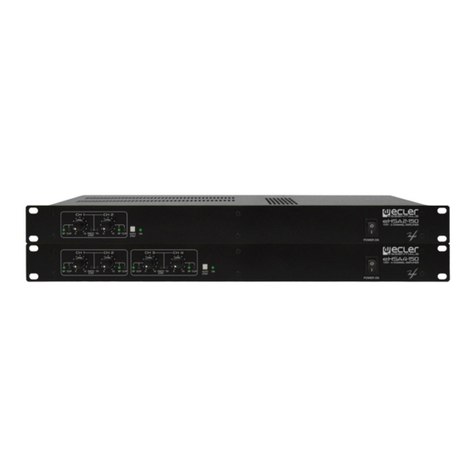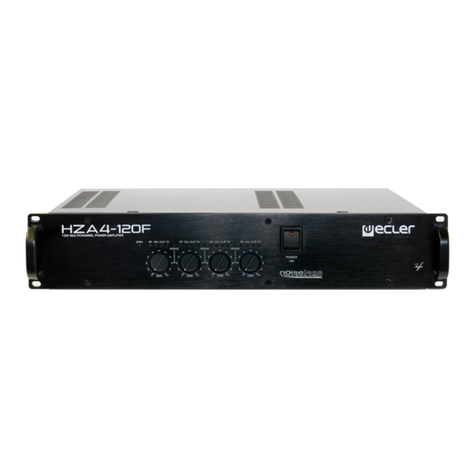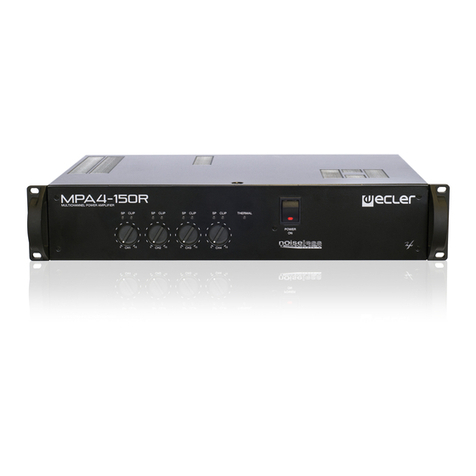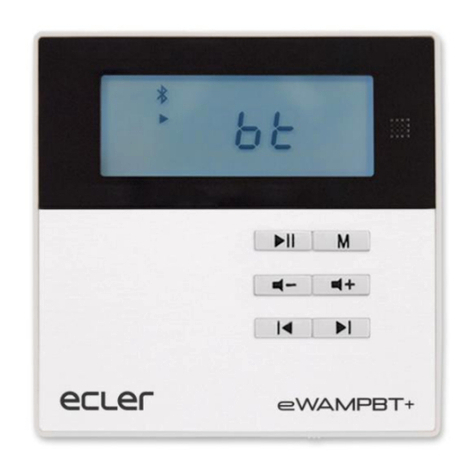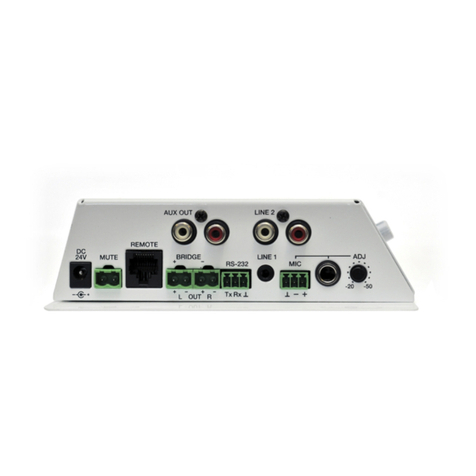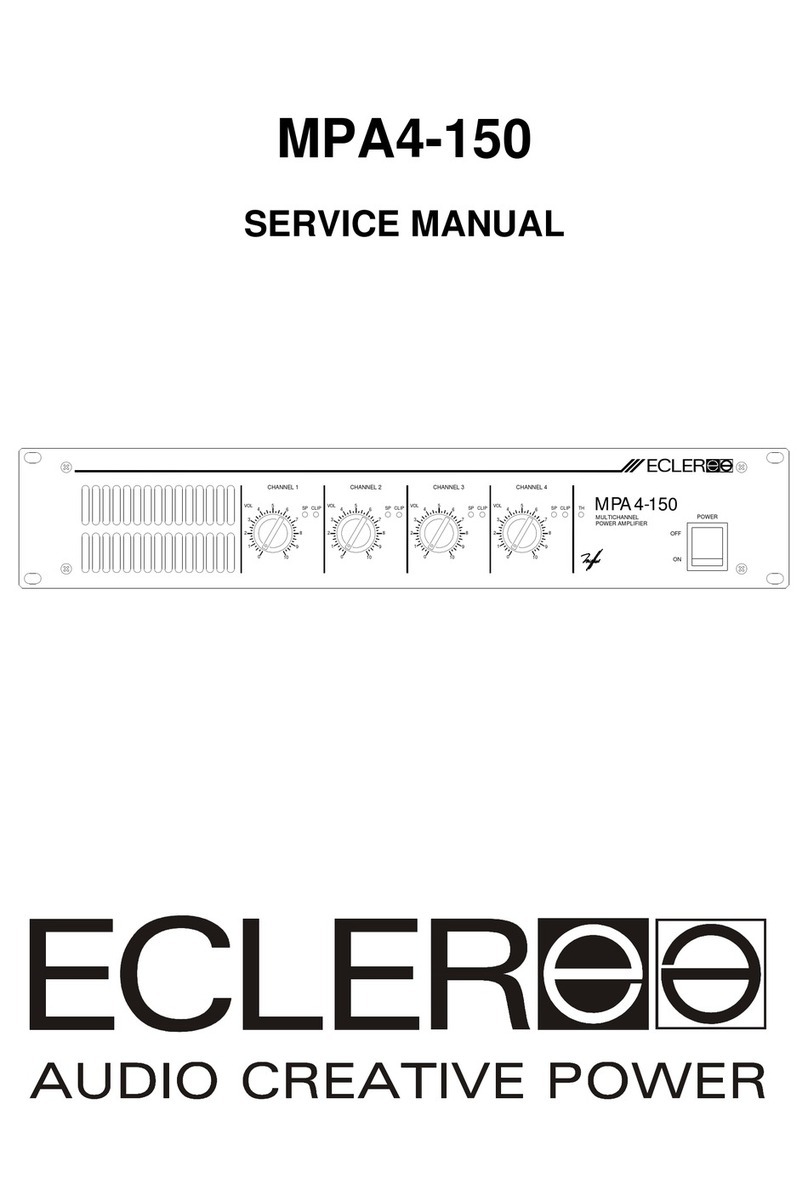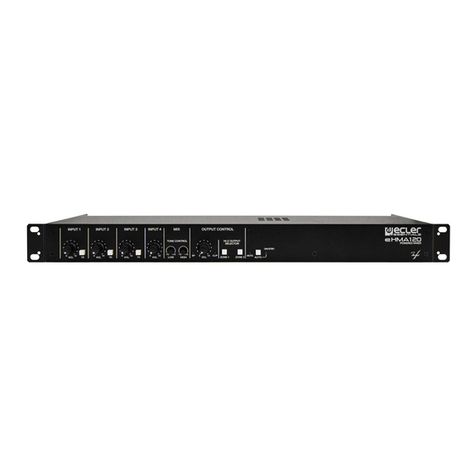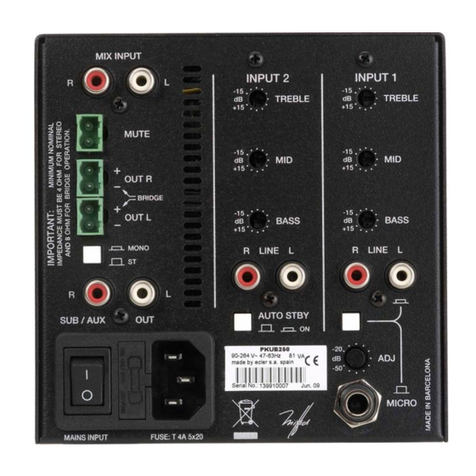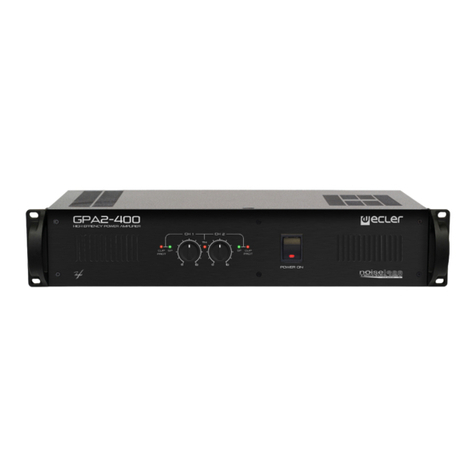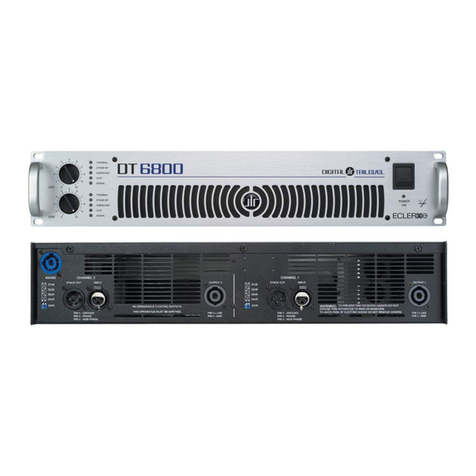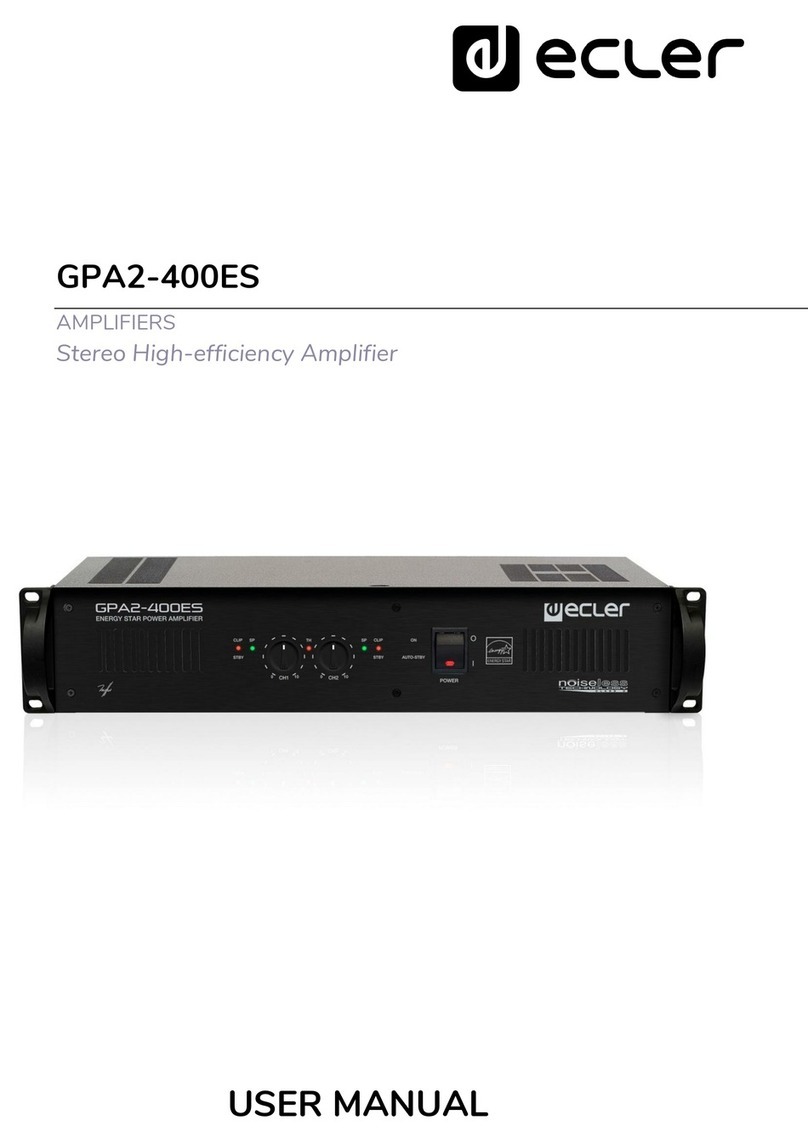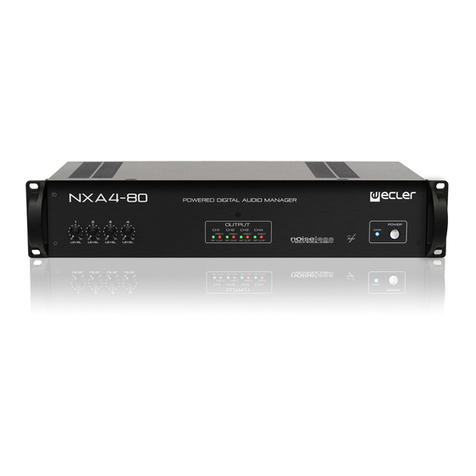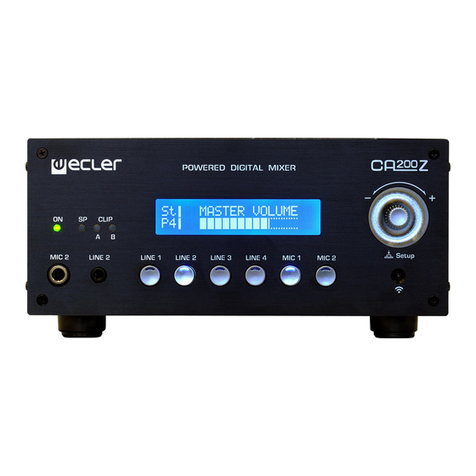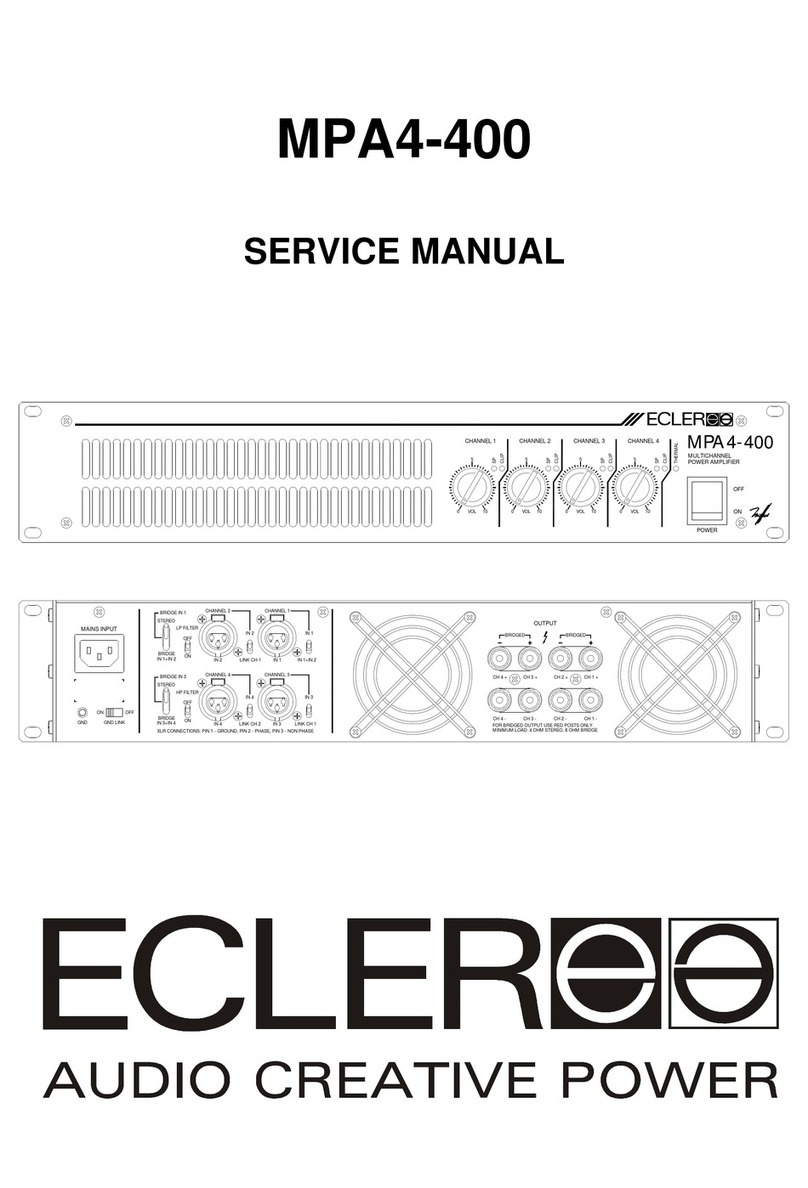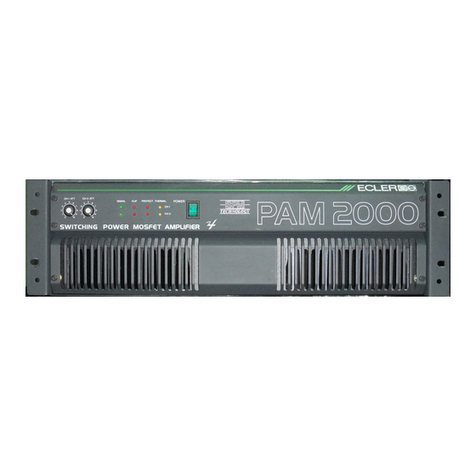4. OPERATION
4.1. Starting up
To start up the amplifier, turn on the 'POWER' switch (7). It will light up together with
the two red 'PROTECT' leds (3). After a short while, the voltages will have stabilised and the
PROTECT leds will go off.
During this period, the A2SP (Analogue Autogain Signal Processor) progressively (in
about 300ms) raises the amplifiers input gain (models 4100 and 6100)
It is very important to start the audio chain in the following order: sound signals,
mixer, equalizers or active filters and, finally, power amplifiers. To stop the chain follow the
inverse order.
4.2 Input attenuators
These are based on rotative potentiometers placed on the front panel (1). The
attenuators make possible to use loudspeakers of less power than the amplifier in a safe way,
without damaging them by a misuse of the preamplifier and/or mixer volume. The amplifier is
supplied with two transparent plastic caps that let you lock the Input gain controls. Once
inserted they can only be removed with a sharp object.
4.3. Protections / Status indicators
All models feature a non-destructive protection system, leaving audio quality
unaffected.
The high output power models PAM4100 and 6100 additionally feature the A2SP –
System (Analogue Autogain Signal Processor), that consists in an VCA (Voltage controlled
Amplifier) controlling the Input Signal gain in high stress situations at very low load impedances
(2Ωor lower). As opposed to conventional compression or limiting techniques, the side-effects
are not noticeable and most important, neither dynamic range is reduced nor THD is increased.
Furthermore, these models include a thermal sensor inside the transformer that also contributes
in controlling the A2SP in case of reaching a critical temperature that could be dangerous to any
of the two power transformers.
Anticlip circuit: This system is an always active protection which constantly analyses
harmonic distortion caused by excessive signal excursion at the power amplifier's output and
automatically reduces the input level in order never to exceed 4 % total harmonic distortion,
which is the default setting. Models 1100 and 2100 can be adjusted via an internal jumper to a
stricter limiting (THD 1%). See figure 4.
The convenience of such a circuit in any kind of installation has to be remarked: The
clear advantage of a limiting system in front of conventional compressors is that the former
does practically not alter the dynamic range, acting only when the distortion threshold is
reached.
On the models 4100 and 6100 the anticlip system is “intelligent”, as it acts differently
depending on the transient type. For transients shorter than 150 ms, it limits so that 10% THD
is allowed, while for transients longer than 150 ms, a maximum THD of 0.1% is allowed.

